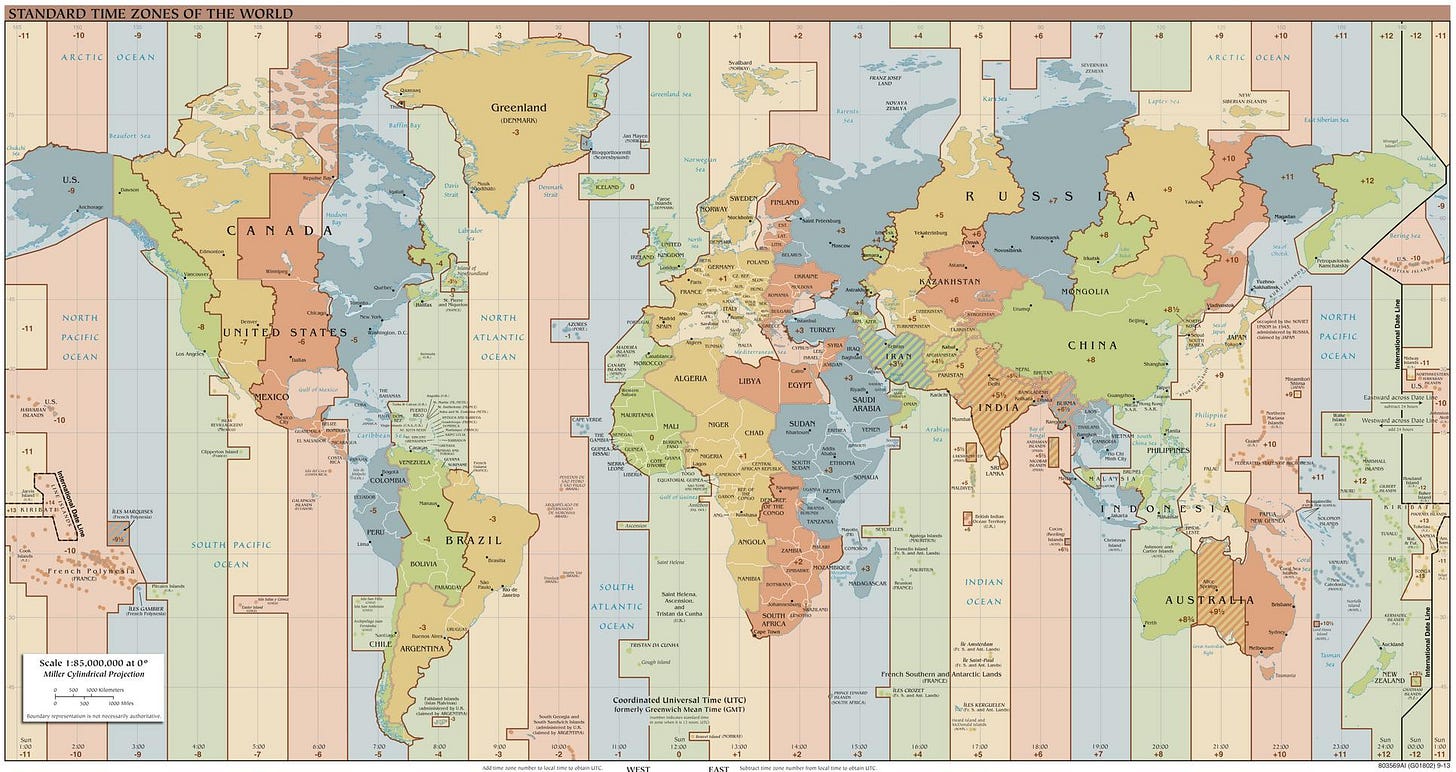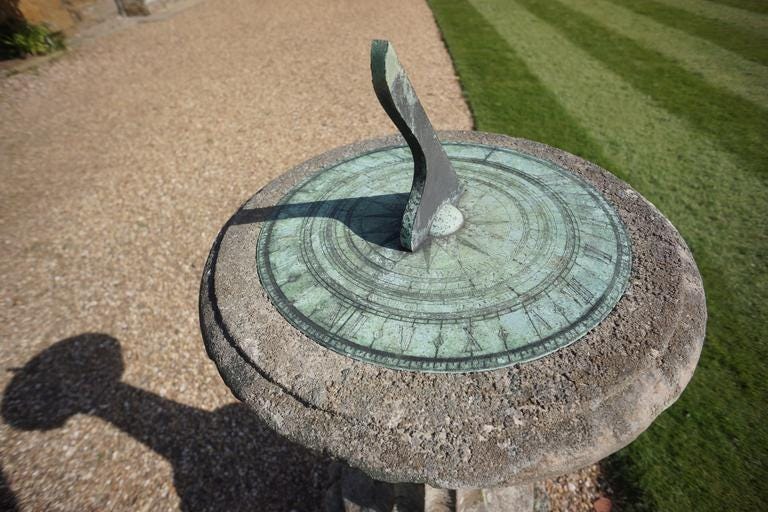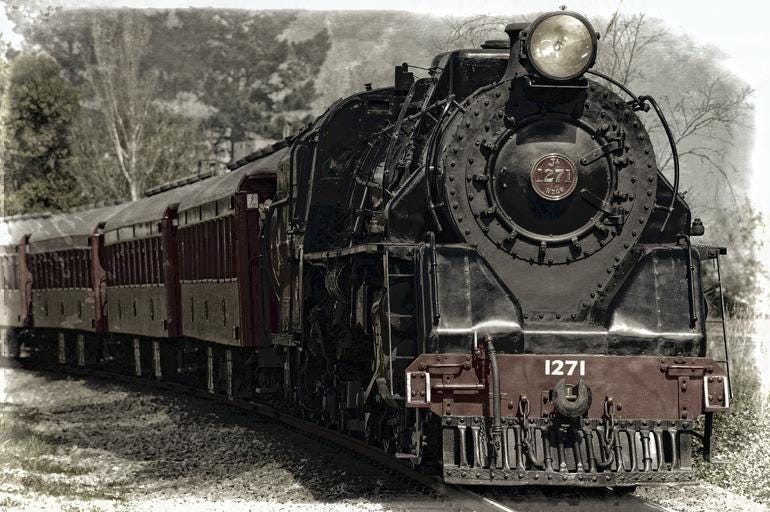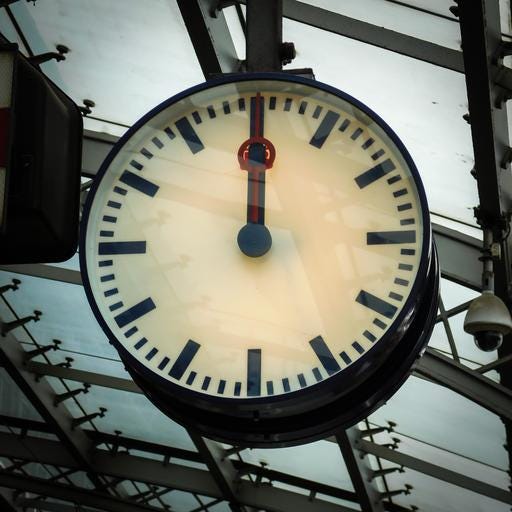Do you have the time?
In our modern world, the response to that question is fairly straightforward; you can simply check your phone, which displays the time sent to it via cell towers. The time you see on your screen is synchronized to an atomic clock and adjusted based on the time zone in which you live. Time zones, however, are a relatively recent human invention, so how did people respond to this question before time zones? And if human civilization was able to carry on just fine without time zones for millennia, what prompted us to implement this strange, and sometimes confusing system? Today, we explore the history of time zones and humanity’s attempt to organize time.
Life before time zones
Believe it or not, there was a time when people didn’t have detailed calendars with meetings and appointments meticulously organized down to the minute (sounds nice, right?). For a long time, humans coordinated activities based solely on the sun’s position in the sky. For instance, a hunter gatherer from the year 8000 BC might say to his buddy, “Are you free at sundown tomorrow? I am going to go throw small rocks at big rocks if you’d care to join.”
As time went on, humans got better at gauging time using different tools such as sundials, candles, water clocks, and eventually came up with time pieces similar to the ones we still use today like the mechanical clock and pocket watch. These inventions allowed people to set appointments, plan events, and manage their daily schedules more accurately. This was all fine and dandy except for one small detail…whose time was the right time?
By the early 19th century, people in towns across the U.S. would calibrate their watches to their town’s central clock, which was set according to the sun (set to noon when the sun is directly overhead). So, technically speaking, everyone’s watches were set to the correct time within a particular town, but what about a different town? Noon for Boston does not occur at the same time as noon for Baltimore because the sun will be directly over Boston before it gets to Baltimore. This meant that during much of the 19th century, noon in Boston was about 11:45 a.m. in Baltimore. At one point, the U.S. had 144 official local times. You might be thinking, why does this matter? If people are going to a different town, they can just adjust their watch by a few minutes once they arrive and go about their day. Well, around this time, a new invention started taking the U.S. and Europe by storm, and without the existence of a standardized time, it started to cause some problems. What was this invention? The train!
The technology that changed our relationship with time
Trains allowed people to travel across the nation at speeds they had never before experienced. Instead of traveling for days to get from one town to another, people could make some journeys in a matter of hours. By the late 19th century, railroads traversed the nation and ran through just about every major city in the U.S. With hundreds of trains operating at any given time, going from town to town at incredible speeds (for the time), precise timetables and schedules were needed. There was a problem though, which time do the trains abide by? Does a New York to Philadelphia train use New York’s local time or Philly’s local time? Now, I can think of a few issues that might result from all these trains trying to adhere to different local times, especially when you consider that they use common train tracks. The time confusion resulted in a lot of missed trains for travelers, and even worse, quite a few train collisions. The railroad companies needed a new system that would help them avoid these costly errors. What they came up with would change the nation and the world forever: time zones.
Manipulating time
After considering a few different standard time proposals, the railroad companies finally settled on a plan that divided the nation into five standard time zones: Intercolonial, Eastern, Central, Mountain, and Pacific (Intercolonial and Eastern were eventually combined). With these new standardized times, people didn’t have to worry about which local time was associated with their train. While this proved to be a successful system, it took quite awhile for the American people to relinquish their local times. In fact, there was a time when the question from the beginning of this article, “Do you have the time?”, would be met with the response, “Which time do you need, local or rail time?”
But how did a pre-internet and pre-cellphone society actually make the precise and large-scale transition to these new times? They literally picked a single day and spread the word that time was going to change on that day (could you imagine?). On November 18, 1883, every clock in every rail station across the country was reset in what would eventually be known as the “day of two noons.” Observatories in each time zone waited for the exact moment that the sun was directly overhead (or noon local time for them), and then sent out a telegraph signal to all the major cities in their new time zone. The signal caused a time ball, situated on top of a local tall building, to drop (similar to the New Years Ball in New York), signifying the new noon. For example, an observatory in Washington D.C. observed the sun directly overhead and sent a signal to cities like Boston, New York, and Philadelphia, where people watched a time ball descend. This process happened all over the country. For some cities, their local noon had already passed by the time they observed the ball drop, but they reset their watches and clocks to noon nonetheless (hence the day of two noons).
In March of 1918, congress finally passed the Standard Time Act, formally implementing this system for the entire country and not just the train system. While the borders of the time zones have slightly changed through the years, to this day, we adhere to the standardized time that was set on that very day, the day of two noons.





Fascinating never knew this.
Very interesting. I wonder (if you had the time), a part 2 about how this spread to cover the whole world?